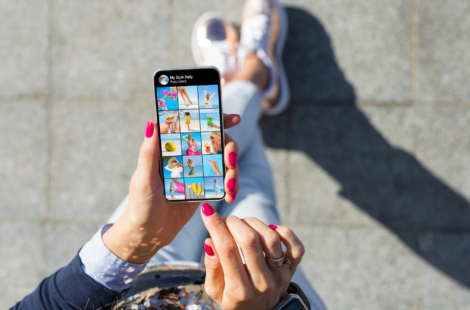WPP slashing its 2025 projections should surprise no one. The advertising industry is hurting – because the digital playbook is breaking.
Yes, brands are spending less, and a retraction is underway. While it’s easy to blame tariffs, inflation, and macroeconomic uncertainty, this merely scratches the surface of what’s going on. Behind the scenes, here’s what I see happening – from the literal to the more nuanced changes to the landscape – and why it matters for every brand trying to grow today.
The Biggest Challenges Facing Advertisers in 2025
💸 Ad costs are out of control
This comes as no surprise, but digital advertising costs have become astronomical. Google’s CPCs are north of $5. Facebook CPMs? Up nearly 20% YoY. Is it competition? Inflation? AI bloat? Greed? All of the above? Whatever is causing it, it’s unsustainable.
📲 The Short-Form Spiral
Social behavior has transformed. Short-form video dominates — but users seem hypnotized, mindlessly scrolling instead of primed to click. When you’re on your twentieth 7-second video, are you in the mindset to snap back to reality and make a buying decision? If you’re like me, you’re not. And for brands, these assets are challenging and expensive to create. What brands save in traditional production costs are offset by resource and contracting costs: it takes time and talent to make a good video that people will want to watch.
🤳 Big “Buy This” Energy
Everyone seems to be selling something, crowding feeds with pushy “you need this now” content. We’re simply drained from being told to buy things every day on every channel. Social used to be a place to connect, unwind, and be entertained. I remember when ads would take up 10-20% of the platform, and the rest was just real content: pictures from friends and family and brands you cared about. Now, fewer and fewer posts are from someone you actually follow, and it’s even rarer to see a post that isn’t selling something. Not just ads, but influencers and creators sharing their favorite products, “DM me for the protocol” on weight loss, investing – you name it. Users are growing tired.
🌟 Celebrity Brands are the New Category Killers
Celeb-owned brands are everywhere — and they’re stealing market share. Actresses selling baby food, actors selling condiments, singers selling makeup…there’s an endless, growing list of celeb brands in every category. Celebrities used to be the spokesperson. Now they are the brand, well-funded and with pre-baked clout. They are dethroning big brands and making it nearly impossible for small brands to compete.
🤖 Platforms Structurally Favor Scale
Google’s Performance Max and Meta’s Advantage+ prioritize automated bidding and audience targeting. This works best for brands with large budgets and mature first-party data systems. Smaller players are priced out of AI-driven auctions because they can’t just target broadly, max out budgets, give it time, and hope for the best. And now, “creative volume” is all the buzz: Put 20-50 ads in an ad set for best results, “they” say. These algorithms are hungry for money and assets, and a lot of brands simply can’t keep up.
How Advertisers Can Succeed in 2025
The situation is dire. But is it hopeless? Not when you’ve got a game plan. Here’s how we’re helping our clients actually grow in this environment:
✅ Stop over-relying on Meta and Google.
To put it simply: they are not your media strategy. They are two tactics that cannot (and should not) do the whole job.
✅ Diversify your media mix.
When they zig, you zag. Identify granular niche audiences, and then move budget into underutilized platforms where they are highly active. Think outside of the paid social box, and drive brand discovery through programmatic display, native, and CTV with platforms like Zeta and The Trade Desk.
✅ Pressure-test your funnel.
Audit every tactic. Kill what’s underperforming. Invest in what’s working, even if attribution is murky by learning to understand and interpret directionality. The changes you make today may not be felt tomorrow; savvy data analysis and cross-channel insights need to be your guiding light. Directional insight > pixel perfection.
✅ Unify brand + performance
No more either/or. Great brands don’t just sell — they educate, entertain, and create demand before asking for a sale. Invest in a brand and content strategy that educates, inspires, and plays the long game. Lower-intent objectives, like reading content or subscribing for text or email, can be cheaper and more impactful over time.
✅ Go long on lifecycle.
Stop optimizing for just the first purchase. When you’re getting a customer, commit to getting them for life. Segment, automate, and retain. For e-com brands, that can mean directing users from specific tactics into specific CRM segments and measuring their value over time. Optimize based on that, not your in-platform ROAS. For B2B brands, keep open lines of communication with your boots-on-the-ground sales teams to see what’s happening down-funnel and optimize for quality, not quantity. Each brand needs its own approach, but focusing on the whole customer lifecycle and not just their first purchase will pay dividends over time.
Our bottom line? We’re not giving up, and neither should you.
Our industry is defined by change: it’s in our DNA. The old playbook is broken, but a better one is being written. Does your brand have one? We’re here to help you write it.



